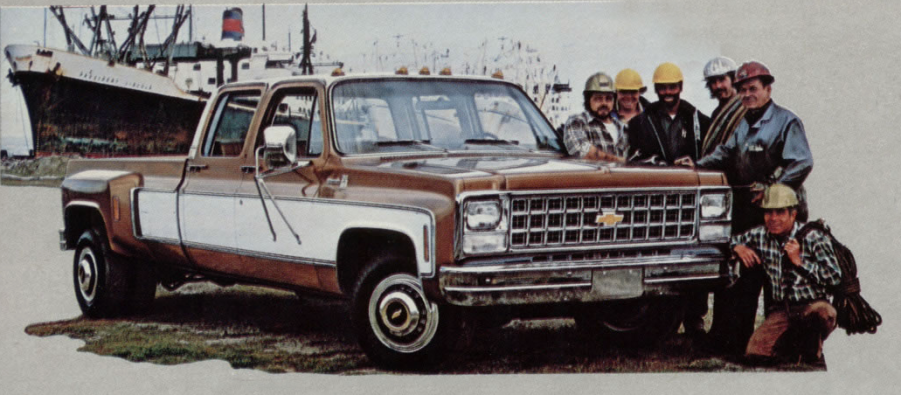
What Was The First Dually Truck?
It’s hard to believe that the popular dual-rear-wheel “dually” pickup we know today didn’t exist before 1973. That’s when GM styled a rear fender to cover the dual rear wheels combined with a standard eight-foot box. What’s a dually for and why did it take so long to come into existence?
Dual-Rear-Wheel Options

Dual-rear-wheel options for trucks have been around forever. Before 1973 you could order dual-rear-wheels for your heavy-duty truck, but it didn’t include a pickup box because it was considered a “commercial” vehicle for specific commercial applications. From the factory, it came with either a flatbed or nothing. It was up to the customer to fashion or purchase whatever they wanted behind the cab.
The dual-rear-wheels aided in dispersing weight and were rated around 10,000 lbs. This had been common as a heavy-duty commercial application but never as a top-end pickup option. If you needed a pickup with a higher load rating your best bet was to order the higher-rated heavy-duty tires and split-rim wheels as seen in the above 1958 Dodge from the Lassie TV series.
First Dually In 1973

For many years the dual-rear-wheel truck chassis allowed commercial customers to have outside companies add unique equipment onto the naked frame. Towing rigs, container boxes, flatbeds, whatever; the dually chassis was a blank canvas. But Ford, Dodge and Chevy/GMC never paired their dually chassis with a standard eight-foot bed because the tires stuck out beyond the fenders. Until 1973.
That’s when Chevy and GMC offered a standard cab and crew-cab pickup with a dual-rear-wheel option. The solution for the tires sticking out beyond the bed sides was a unique fiberglass fender that mimicked the step-side fender.

This did two things. It created a new niche and also a new styling aesthetic. The configuration was meant for adding campers, but overnight the single- and crew-cab dually also allowed drag racers, farmers, and those weekend recreation seekers with campers a new way to haul their stuff. Now the owner got the convenience of a pickup bed and hauling capabilities of a heavy-duty truck. What a concept, right?

Chevy and GMC featured the dually prominently in advertising rather than hidden among the specifications on the back page of truck brochures. It announced to the world the owner had some compelling outside interests and needs be it trailering horses or dragsters, or sliding on the camper for weekend getaways.

It took Ford until 1980 to counter with a fendered dually. By then GM had scored eight years of an exclusive market with these unique haulers. Some upfitters fashioned a dually setup for Ford trucks allowing owners the same advantages GM’s duallys provided, but that came to an end in 1980. Dodge/Ram followed soon after.
Modern Duallys

As the dually’s popularity increased so did its protruding fenders with each successive redesign. Today’s dually has massive rear fenders taking up the entire side of eight-foot beds, except on the Ram Mega-Cab. That’s because it can only be ordered with the short bed. Ram fashioned a simple fender extension but the effect is the same. It conveys that your needs are “heavy-duty” and beyond anything a mere half-ton pickup can handle.



